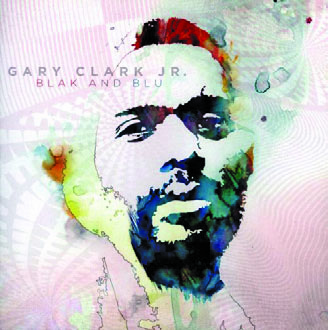The Secrets Behind Gary Clark Jr.'s Guitar Tone on "When My Train Pulls In"
While Gary Clark Jr.’s main intentions were to showcase his versatility as a songwriter and singer on his major-label debut album, Blak and Blu, he still couldn’t resist providing more than a handful of virtuoso guitar performances as well, helping him earn status as of one of the most promising up-and-coming guitarists of the new millennium.

Clark previously recorded a live solo version of “When My Train Pulls In” for The Bright Lights EP, but when recording the studio version of the song for Blak and Blu, he dramatically increased the intensity with a fuzz-driven main riff and two incendiary extended solos. From the blazing tones emanating from Clark’s guitar to his inventive, melodic lines, “When My Train Pulls In” made a bold statement that a new guitar hero had arrived.
Clark’s guitar tone progressed significantly during the year between the release of The Bright Lights EP and Blak and Blu, and Clark attributed most of that to his newly discovered love of overdrive and fuzz pedals. His main tone on “When My Train Pulls In” is a prime example of that, as he layers Analog Man Astro Tone fuzz and Analog Man King of Tone overdrive pedals together to create a massive tone with distinctive distortion that sounds like speakers on the verge of blowing up yet with expressive midrange and clarity.
The key to this sound is using both pedals sparingly, with the Astro Tone set to only a moderate level of fuzz. Clark’s amp—a Fender Vibro-King—also helps maintain clarity with its stellar clean tone characterized by rich midrange and smooth treble.

The layered fuzz and overdrive pedals remain the core of Clark’s tone throughout the main riff and solos, although occasionally he bypasses the fuzz for a few brief sparkling fills and disengages both pedals for some brief funky rhythm parts. However, for the closing solo he goes balls out, with a wah pedal adding further texture to the layered fuzz and overdrive tone.
ORIGINAL GEAR
GUITAR: Mid-Sixties Epiphone Casino with two P90 single-coil pickups. Bridge pickup, volume: 5–10, tone: 10
AMP: Fender 20th Anniversary Vibro-King combo with three Jensen 25-watt, 8-ohm P-10R-F alnico speakers (Input: 1, Dwell: 4, Mix: 2, Tone: 3, Fat switch up, Volume: 6, Treble: 6, Bass: 3, Mid: 5, Speed: 1, Intensity: 1)
EFFECTS: Analog Man Astro Tone fuzz (Volume: 8, Fuzz: 2.5, Tone: 6), Analog Man King of Tone overdrive (left/channel 1 only in Normal Overdrive mode, Volume 1: 7, Drive 1: 6, Tone 1: 6), Teese Real McCoy Custom wah (second solo only starting at 4:40)
All the latest guitar news, interviews, lessons, reviews, deals and more, direct to your inbox!

- Epiphone Casino
- Fender Hot Rod Series Blues Junior IV
- Electro-Harmonix East River Drive Overdrive
- TC Electronic Rusty Fuzz
- Dunlop Original Cry Baby Wah
TONE TIP: When layering fuzz and overdrive together, moderation is the key. Place the fuzz pedal before the overdrive in the signal chain and turn the fuzz control up only slightly. A clean or slightly overdriven tone from the amp helps maintain clarity.
Chris is the co-author of Eruption - Conversations with Eddie Van Halen. He is a 40-year music industry veteran who started at Boardwalk Entertainment (Joan Jett, Night Ranger) and Roland US before becoming a guitar journalist in 1991. He has interviewed more than 600 artists, written more than 1,400 product reviews and contributed to Jeff Beck’s Beck 01: Hot Rods and Rock & Roll and Eric Clapton’s Six String Stories.



